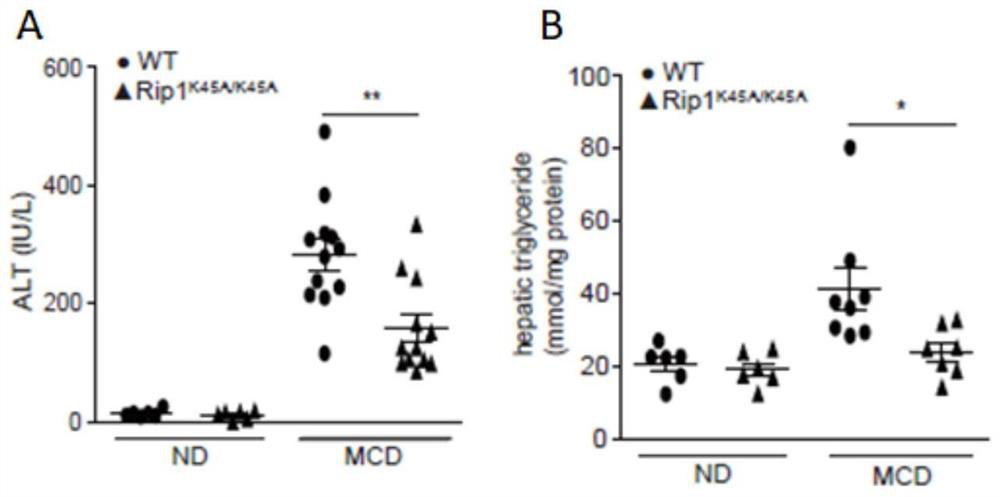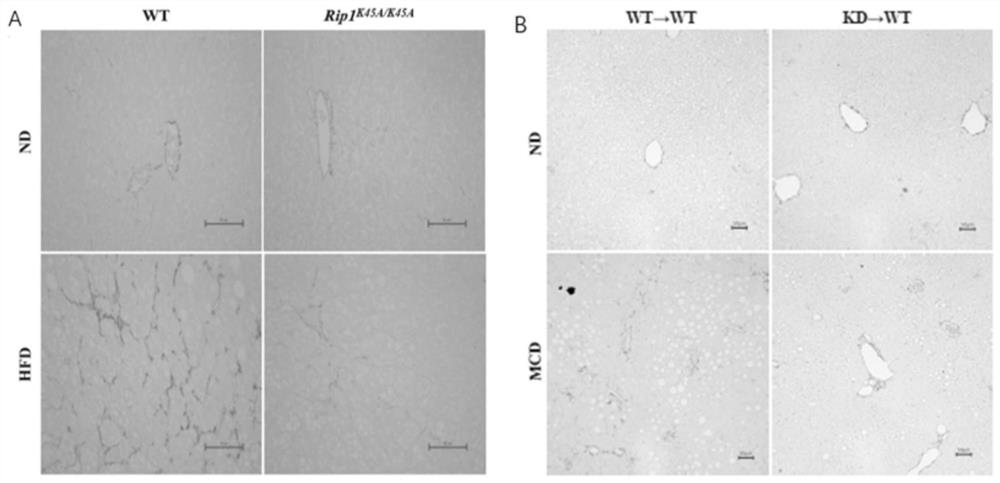Application of macrophage-targeting RIPK1 and RIPK1 inhibitor in screening and preparing liver injury diagnosis and treatment medicine
A technology for targeting macrophages and inhibitors, which is used in serine/threonine kinase 1 and its inhibitors, screening and preparation of liver injury diagnosis and treatment drugs, and can solve problems such as reducing cell death and inflammation.
- Summary
- Abstract
- Description
- Claims
- Application Information
AI Technical Summary
Problems solved by technology
Method used
Image
Examples
Embodiment 1
[0023] The present invention takes C57 wild-type mice and RIPK1 gene knockout (kinase inactivation) mice as experimental objects, and constructs fatty liver and steatohepatitis by feeding a high-fat diet (HFD) or feeding a methionine-choline deficient diet (MCD). , liver fibrosis, liver cirrhosis models, and bone marrow transplantation to study the function of macrophages and RIPK1 gene in steatohepatitis and other related inflammatory diseases.
[0024] In the present invention, the phosphorylation site of the RIPK1 gene is knocked out by CRISPR Cas9 technology, and the RIPK1 kinase inactivation mouse is constructed. Normal C57 mice were transplanted with bone marrow of RIPK1 kinase-inactivated mice and fed with high-fat diet (HFD) or methionine-choline-deficient diet (MCD) to construct models of non-alcoholic fatty liver, liver cirrhosis and liver fibrosis.
[0025] 1. Construction of Bone Marrow Transplanted Mice
[0026] Eight-week-old wild-type C57BL / 6 mice were lethally...
PUM
 Login to View More
Login to View More Abstract
Description
Claims
Application Information
 Login to View More
Login to View More - R&D
- Intellectual Property
- Life Sciences
- Materials
- Tech Scout
- Unparalleled Data Quality
- Higher Quality Content
- 60% Fewer Hallucinations
Browse by: Latest US Patents, China's latest patents, Technical Efficacy Thesaurus, Application Domain, Technology Topic, Popular Technical Reports.
© 2025 PatSnap. All rights reserved.Legal|Privacy policy|Modern Slavery Act Transparency Statement|Sitemap|About US| Contact US: help@patsnap.com



